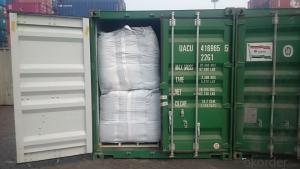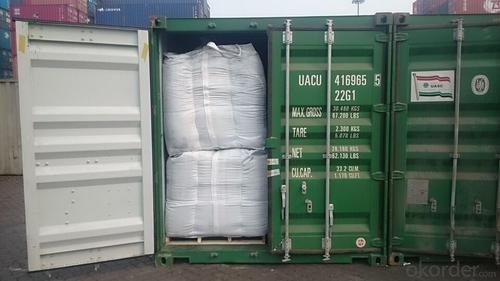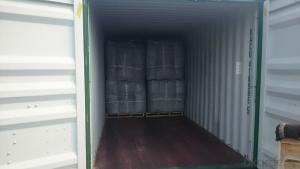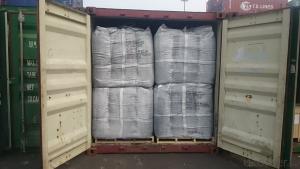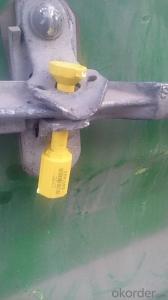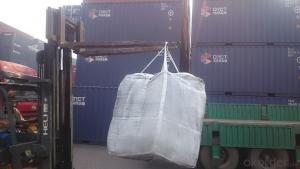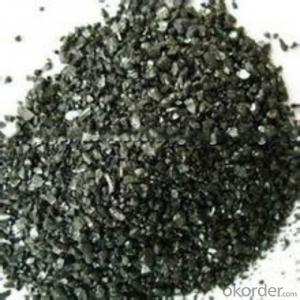GPC with lower Sulphur0.03% max in steady quality
- Loading Port:
- Tianjin
- Payment Terms:
- TT OR LC
- Min Order Qty:
- 21 m.t.
- Supply Capability:
- 5000 m.t./month
OKorder Service Pledge
OKorder Financial Service
You Might Also Like
Introduction:
GPC has good characteristics with low ash, low resistivity, low sulphur, high carbon and high density. It is the best material for high quality carbon products. It is used as carbon additive in steel industry or fuel.
Features:
1.Our strong team provide you reliable service that make you feel purchasing is more easier
2. We ensure that we can supply capability with competitive price.
3. Work strictly to guarantee product quality,
4. Highest standard of integrity. Guarantee customer's benefit.
5. Supplying Pet Coke, Met coke, Foundry Coke, Carbon Raiser etc.
Specifications:
F.C.% | 95MIN | 94MIN | 93MIN | 92MIN | 90MIN | 85MIN | 84MIN |
ASH % | 4MAX | 5MAX | 6 MAX | 6.5MAX | 8.5MAX | 12MAX | 13MAX |
V.M.% | 1 MAX | 1MAX | 1.0MAX | 1.5MAX | 1.5MAX | 3 MAX | 3 MAX |
SULFUR % | 0.3MAX | 0.3MAX | 0.3MAX | 0.35MAX | 0.35MAX | 0.5MAX | 0.5MAX |
MOISTURE % | 0.5MAX | 0.5MAX | 0.5MAX | 0.5MAX | 0.5MAX | 1MAX | 1MAX |
Pictures
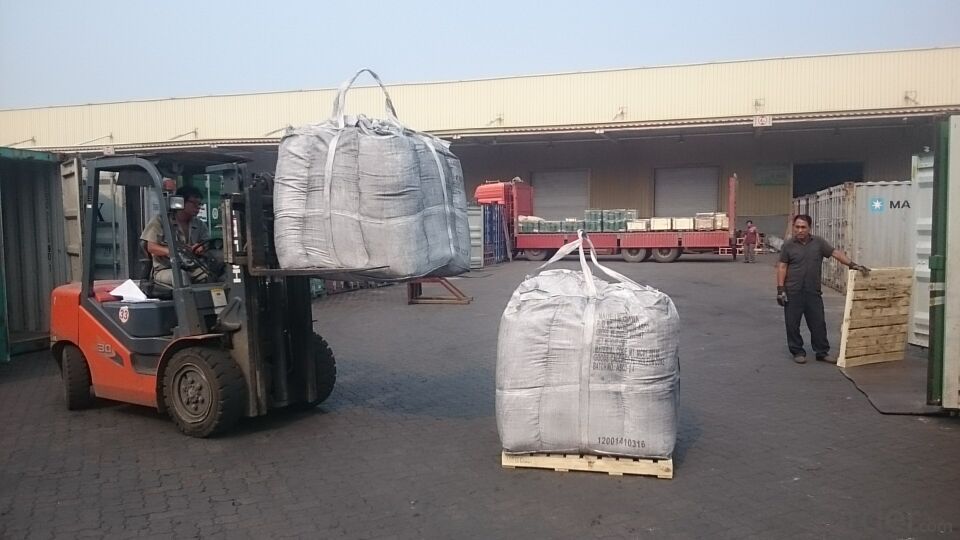
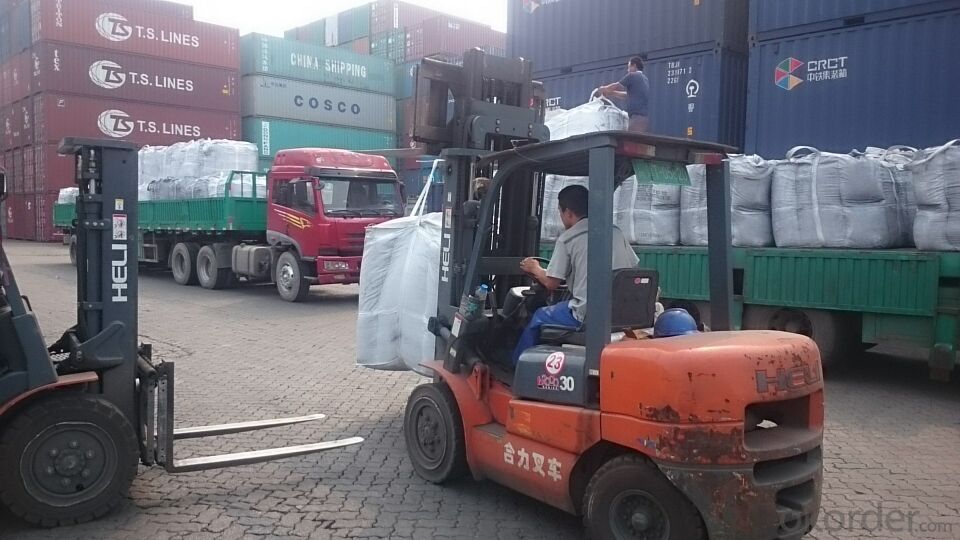
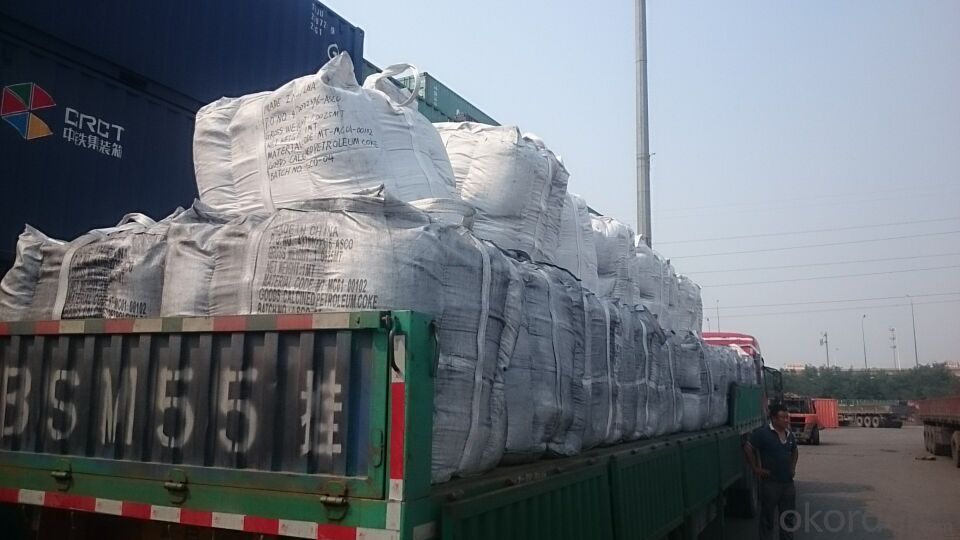
FAQ:
1. Your specification is not very suitable for us.
Please offer us specific indicators by TM or email. We will give you feedback as soon as possible.
2. When can I get the price?
We usually quote within 24 hours after getting your detailed requirements, like size, quantity etc. .
If it is an urgent order, you can call us directly.
3. Do you provide samples?
Yes, samples are available for you to check our quality.
Samples delivery time will be about 3-10 days.
4. What about the lead time for mass product?
The lead time is based on the quantity, about 7-15 days. For graphite product, apply Dual-use items license need about 15-20 working days.
5. What is your terms of delivery?
We accept FOB, CFR, CIF, EXW, etc. You can choose the most convenient way for you. Besides that,
we can also shipping by Air and Express.
6. Product packaging?
We are packed in bulk ship or in ton bag or placing in container or according to your requirements.
7. Notice
please note that the price on Alibaba is a rough price. The actual price will depends on raw materials, exchange rate wage and your order quantity .Hope to cooperation with you, thanks !
- Q: How does carbon cycle through living organisms?
- Carbon is exchanged and recycled among different parts of the Earth, including living organisms, in a process known as the carbon cycle. Living organisms primarily acquire carbon through photosynthesis, where sunlight, carbon dioxide, and water are used to produce glucose and oxygen. Plants absorb carbon dioxide from the atmosphere and convert it into glucose, which serves as an energy source for their growth. Some glucose is immediately utilized by plants, while the excess is stored as starch and other carbohydrates. This is how carbon is initially incorporated into living organisms. Consumers, such as animals, obtain carbon by consuming plants or other animals that have consumed plants. When animals consume plants, the stored carbohydrates are broken down into glucose, releasing carbon dioxide through cellular respiration. Animals use glucose as an energy source for their own metabolic activities. When animals and plants die or produce waste, their organic matter decomposes, releasing carbon back into the environment. Some of this carbon is converted into carbon dioxide through decomposition and returned to the atmosphere. However, decomposers like bacteria and fungi convert a significant portion of carbon into organic compounds that can be utilized by other living organisms. The carbon cycle continues as carbon is constantly exchanged between the atmosphere, living organisms, and Earth's reservoirs such as the oceans and soil. Carbon can also be stored for extended periods as fossil fuels like coal, oil, and natural gas. When these fuels are burned for energy, carbon dioxide is released into the atmosphere, contributing to the greenhouse effect and climate change. In summary, the carbon cycle is a complex process involving the continuous exchange and transformation of carbon between living organisms and the environment. It is critical for maintaining carbon balance in our ecosystem and plays a significant role in regulating the Earth's climate.
- Q: What are carbon-based superconductors?
- Carbon-based superconductors are a type of material that exhibit superconductivity, a phenomenon where electrical resistance drops to zero at low temperatures. Unlike conventional superconductors, which are typically metallic elements or alloys, carbon-based superconductors are composed primarily of carbon atoms. These materials are known for their unique structure and properties, which make them highly efficient conductors of electricity when cooled below a certain critical temperature. Carbon-based superconductors can be categorized into two main types: organic superconductors and fullerene superconductors. Organic superconductors are made up of carbon-based molecules, such as organic salts or polymers, which form a crystal lattice structure. These materials have been extensively studied and have shown promising superconducting properties at low temperatures. Fullerene superconductors, on the other hand, are composed of carbon molecules arranged in a specific cage-like structure, called fullerenes. The most well-known fullerene is C60, also known as a buckyball, which consists of 60 carbon atoms arranged in a soccer ball-like shape. By doping these fullerene cages with certain elements, such as alkali metals or transition metals, their superconducting properties can be enhanced. What makes carbon-based superconductors particularly interesting is their potential for high-temperature superconductivity. While most conventional superconductors require extremely low temperatures close to absolute zero (-273.15°C or -459.67°F) to exhibit superconductivity, some carbon-based superconductors have been found to retain their superconducting properties at relatively higher temperatures. This property is crucial for practical applications, as it allows for easier cooling and opens up possibilities for widespread use of superconductivity in various fields, including energy transmission, magnetic levitation, and quantum computing. However, it is important to note that carbon-based superconductors are still an active area of research, and many challenges remain in understanding their mechanisms and improving their superconducting properties. Nonetheless, the discovery and exploration of these materials hold great promise for advancing the field of superconductivity and enabling new technological breakthroughs.
- Q: A carbon Roast Lamb Leg stores need to how much money
- Do about 50 thousand! Do not have their own skills, you have to learn, have time to look at the Weifang green, Mongolia edge, taste and scale are pretty good!
- Q: What is the composition of carbon in stainless steel?
- The quality and performance of steel are determined according to needs, and different elements should be included in different requirements(1) carbon, the higher the carbon content, the higher the hardness, but its plasticity and toughness are worse(2) sulfur is the harmful impurity in steel. The steel with high sulfur content is easy to crack when it is processed by high temperature. It is usually called hot brittleness(3) p; can make the plasticity and toughness of the steel decreased significantly, especially at low temperature is more serious, this phenomenon is called cold brittleness. In high-quality steel, sulfur and phosphorus must be strictly controlled. But on the other hand, sulfur and phosphorus containing high in low carbon steels, can make the cutting easily broken, is benefit to improve the machinability of the steel is.(4) manganese; can improve the strength of steel, can weaken and eliminate the adverse effects of sulfur, and can improve the hardenability of steel, manganese content of high alloy steel (Gao Menggang) has good abrasion resistance and other physical properties.(5) silicon; it can improve the hardness of steel; but the plasticity and toughness decrease; the steel used in the electrician contains a certain amount of silicon, which can improve the soft magnetic properties(6) tungsten can improve the red hardness and heat strength of steel, and can improve the wear resistance of steel
- Q: How is carbon used in the production of textiles?
- Carbon is used in the production of textiles in several ways. One of the most common uses of carbon in textiles is in the form of carbon fibers. These fibers are lightweight, strong, and have high tensile strength. They are used to reinforce various types of fabrics, adding durability and enhancing their performance. Carbon is also used in the production of activated carbon, which is a highly porous material. Activated carbon is commonly used in textile production for its ability to adsorb and remove unwanted odors and chemicals. It is used in the manufacturing of fabrics for sportswear, workwear, and other specialized textiles where odor control is important. Furthermore, carbon black, a fine powder made of carbon particles, is used as a pigment in textile printing and dyeing. It provides deep black color to fabrics and is commonly used in the production of garments, upholstery, and other textiles where a dark color is desired. Another innovative use of carbon in textiles is through the development of carbon nanotextiles. These textiles are made from carbon nanotubes, which are cylindrical structures composed of carbon atoms. Carbon nanotextiles have unique properties such as high electrical conductivity and thermal stability, making them ideal for applications like wearable electronics, smart textiles, and conductive fabrics. In summary, carbon is widely used in the production of textiles through the incorporation of carbon fibers, activated carbon, carbon black, and carbon nanotubes. These applications contribute to the strength, durability, odor control, coloration, and functionality of various types of textiles.
- Q: What are the different types of carbon-based food additives?
- The food industry commonly utilizes various carbon-based food additives for different purposes. These additives have multiple functions, including enhancing flavor, improving texture, and extending the shelf life of food products. Here are a few examples: 1. Activated Carbon: Used as a food coloring agent, activated carbon is a porous form of carbon with high adsorption properties. It is often employed to give black color to specific food and beverages, such as black food coloring or black lemonade. 2. Carbon Black: Also known as vegetable carbon or vegetable black, this additive is derived from charcoal and serves as a natural food coloring agent. It is frequently utilized to provide a dark black or grey color to foods like black licorice, ice cream, and bakery products. 3. Carbon Dioxide: Though not directly added as an additive, carbon dioxide gas is utilized in food processing and packaging to prolong the shelf life of certain products. It is commonly present in carbonated beverages to create the characteristic fizz and is also used in modified atmosphere packaging to preserve the freshness of specific foods. 4. Carbonated Water: This refers to carbon dioxide gas dissolved in water, resulting in carbonic acid. Carbonated water is often used as a base for soft drinks and beverages, imparting effervescence and a refreshing taste. 5. Carbonates: Calcium carbonate and sodium carbonate are examples of carbonates used as acidity regulators in food products. They aid in maintaining the pH balance and controlling the acidity of certain foods, such as canned vegetables, fruit preserves, and pickles. 6. Carbon-based Preservatives: Sorbic acid and propionic acid, among other carbon-based additives, act as preservatives to prevent the growth of molds, bacteria, and yeasts in food products. They contribute to extending the shelf life of products like bread, cheese, and processed meats. It is essential to note that while carbon-based food additives are generally considered safe for consumption, it is advisable to read food labels and seek guidance from professionals, such as dietitians or healthcare providers, if any concerns or specific dietary restrictions arise.
- Q: What are the effects of carbon emissions on freshwater systems?
- Carbon emissions have significant effects on freshwater systems. One of the main consequences is the acidification of water bodies. When carbon dioxide dissolves in water, it forms carbonic acid, leading to a decrease in pH levels. This acidification can have detrimental impacts on freshwater organisms such as fish, amphibians, and invertebrates, as it disrupts their physiological processes and can even lead to their death. Furthermore, carbon emissions contribute to the phenomenon of global warming, which in turn affects freshwater systems. Rising temperatures can lead to increased evaporation, causing water scarcity in certain regions. This can have severe implications for both human populations and ecosystems that rely on freshwater resources. Additionally, the warming of freshwater systems can disrupt the balance of the ecosystem by favoring the growth of harmful algae blooms. These blooms are fueled by excess nutrients, such as nitrogen and phosphorus, which are often present in runoff from agricultural and urban areas. The increased temperatures coupled with nutrient enrichment can lead to the proliferation of harmful algae, which can produce toxins that are harmful to both aquatic life and human health. Moreover, carbon emissions can also indirectly impact freshwater systems through their contribution to climate change. As global temperatures rise, the melting of glaciers and polar ice caps occurs, leading to an increase in freshwater entering the system. This sudden influx of freshwater can disrupt the delicate balance of saltwater and freshwater ecosystems, affecting the distribution and migration patterns of various species. It can also lead to changes in salinity levels, impacting the survival and reproduction of marine organisms. In conclusion, carbon emissions have a range of negative effects on freshwater systems. These include acidification, water scarcity, the proliferation of harmful algae blooms, and disruptions to the delicate balance between saltwater and freshwater ecosystems. It is crucial to reduce carbon emissions and mitigate the impacts of climate change to protect the health and sustainability of freshwater systems.
- Q: What are the uses of carbon black?
- Carbon black is primarily used as a reinforcing filler in tires and other rubber products to improve their durability and strength. Additionally, it is widely employed as a pigment in inks, coatings, and plastics due to its ability to provide color and UV protection. Carbon black also finds applications in batteries, electrodes, conductive materials, and as a catalyst support in chemical reactions.
- Q: Helmet material: ABS composites, FRP, carbon fiber, what are the differences? How to tell good from bad?
- ABS resin is one of the five major synthetic resin, impact resistance, heat resistance, low temperature resistance, chemical resistance and excellent electrical properties, but also has the characteristics of easy processing, product size stability, good surface gloss, easy coloring, painting, but also the surface plating metal, electroplating, welding, hot pressing and bonding the two processing, widely used in the industrial field of mechanical and automotive electrical and electronic instruments, textiles and construction, is a very widely used thermoplastic engineering plastics.Materials (Composite) is a material consisting of two or more than two different materials which, in physical or chemical ways, macroscopically form new properties. Various materials in the performance complement each other, and produce synergistic effect, so that the comprehensive performance of composite material is better than the original material, and meet a variety of different requirements. The matrix materials of composite materials are divided into two major categories: metal and nonmetal. Metal matrix commonly used aluminum, magnesium, copper, titanium and its alloys. The non-metallic matrix mainly includes synthetic resin, rubber, ceramic, graphite, carbon and so on.
- Q: What are the impacts of carbon emissions on the stability of islands?
- The stability of islands is greatly affected by carbon emissions, with significant and wide-ranging impacts. Climate change, which is caused by carbon emissions, leads to various consequences such as sea level rise, increased storm intensity, and ocean acidification. All of these factors pose serious threats to the stability of islands. Sea level rise is an immediate and visible consequence of carbon emissions on islands. As global temperatures rise, glaciers and ice caps melt, and ocean waters expand, the sea levels gradually increase. This rise in sea level puts low-lying islands in danger of being flooded, eroded, or even completely disappearing. In fact, many small islands, especially in the Pacific and Indian Oceans, are already witnessing the effects of rising sea levels, resulting in the loss of land, displacement of populations, and destruction of infrastructure. Another impact of carbon emissions on islands is the heightened intensity and frequency of storms. The warmer ocean temperatures caused by carbon emissions fuel the formation of tropical storms and hurricanes, which can cause devastating damage to island communities. These storms can lead to widespread destruction of homes, infrastructure, and ecosystems, resulting in long-term economic and social disruptions. Islands are particularly vulnerable to storm surges, which occur when strong winds push seawater onto land, causing extensive flooding and erosion. Ocean acidification, which is caused by the excess absorption of carbon dioxide by the ocean, is another significant consequence of carbon emissions on islands. Increased levels of carbon dioxide in the atmosphere lead to increased absorption by the ocean, resulting in a decrease in pH levels and making the ocean more acidic. This acidification poses a threat to coral reefs, which are crucial for island ecosystems and act as natural barriers against wave action and storm surge. Coral reefs provide habitats for a diverse range of marine life and are vital for tourism and local economies. The loss or degradation of coral reefs due to ocean acidification affects not only the biodiversity but also the ability of islands to withstand climate-related impacts. In conclusion, the impacts of carbon emissions on the stability of islands are profound and severe. Rising sea levels, increased storm intensity, and ocean acidification all present significant threats to the physical and social stability of island communities. It is crucial to take urgent action to reduce carbon emissions, invest in adaptation measures, and support island nations in building resilience to these impacts.
Send your message to us
GPC with lower Sulphur0.03% max in steady quality
- Loading Port:
- Tianjin
- Payment Terms:
- TT OR LC
- Min Order Qty:
- 21 m.t.
- Supply Capability:
- 5000 m.t./month
OKorder Service Pledge
OKorder Financial Service
Similar products
Hot products
Hot Searches
